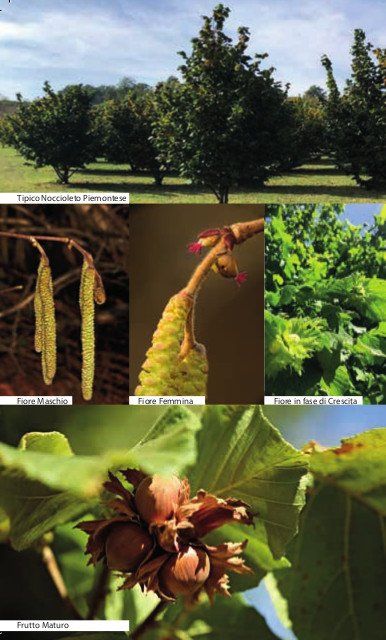Artisanal quality and unmistakable aroma
Our processing of hazelnuts gives them a delicious flavour, typical of artisans. We operate according to the stages of shelling and transformation, until we present the finished product.
The Piedmontese hazelnut is one of the best varieties in the world for its excellent yield as well as its organoleptic qualities, with a low fat content, a thin shell, and a truly unique taste.
Curiosity about hazelnuts
The peculiarity of this plant is that it blooms in mid-winter, usually around January and February, although the flowers begin to appear in late summer or autumn. The male flowers are a type of cylindrical cluster that is green in colour and can reach a length of 7-10 cm. It largely depends on the progression of the season, but it certainly remains one of the plants with the earliest flowering. Small intense red flowers, on the other hand, can be found at the tips of the branches. They are the female flowers hidden within small buds, a few millimetres long, which, at the same time as the flowering of the male flowers, present a red tuft intended to receive the pollen grains. Pollination is entrusted to the wind: there is no need for showy, colourful, and fragrant flowers (they must not attract the attention of insects) but rather structures that can release clouds of pollen into the air. Flowering occurs before the plant produces leaves, a natural barrier that would hinder the circulation of pollen between the branches. Like all plants that rely on the wind for their future, the hazel also produces large quantities of pollen, most of which will be lost. From the buds that are pollinated in this way, we will obtain our hazelnuts, woody fruits surrounded by a frayed leafy husk, which mature in groups of 2-3 or more at the end of summer, containing a single edible fruit.

The Tonda Gentile Trilobata hazelnut
The Tonda Gentile Trilobata is the queen hazelnut of our company's production: its name derives from its delicate flavour, ease of calibration, and exceptional peelability, qualities that have earned it the I.G.P. certification, guaranteeing quality and exclusively Piedmontese provenance.

Production of semi-finished hazelnut products
The Tonda Gentile Trilobata hazelnut is a high-quality raw material extensively used by patisseries and ice cream shops due to its organoleptic characteristics and workability. In addition to producing the fruit, we specialise in creating semi-finished hazelnut products of absolute quality, such as hazelnut paste: this is obtained from grinding and subsequent refining of the hazelnut, a technique that preserves the hazelnut's aromas while allowing the paste to be stored without the use of preservatives.

From shelling to finished product
The processing of hazelnuts is carried out with great attention to every phase of the process, from shelling to transformation into a finished product, ready to be used on the pastry chef's counter: the result is an extraordinary ingredient used for preparing the most common and delicious desserts in Piedmontese cuisine and beyond.

The hazelnut as the star in patisserie
The quality of our semi-finished hazelnut products comes from the combination of our agricultural soul and the most modern machinery, which is respectful of the fruit and its characteristics. This is why our hazelnut paste is a true delight at the heart of many successful recipes.

We look forward to welcoming you to our premises in Alba to offer you our exquisite products









